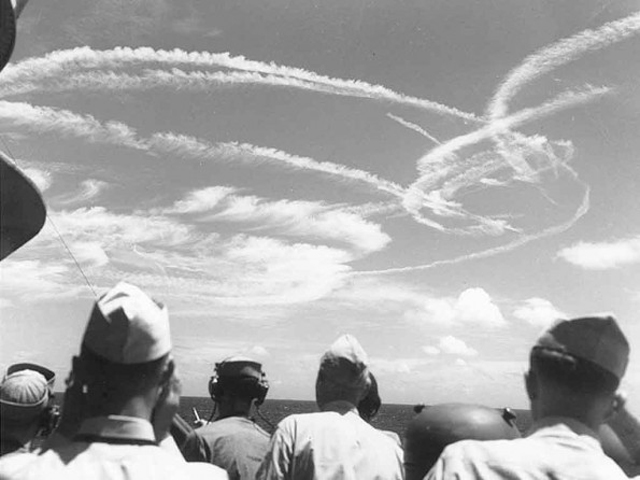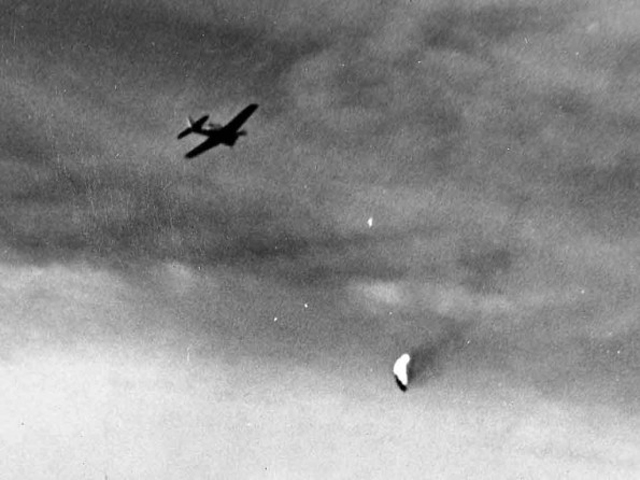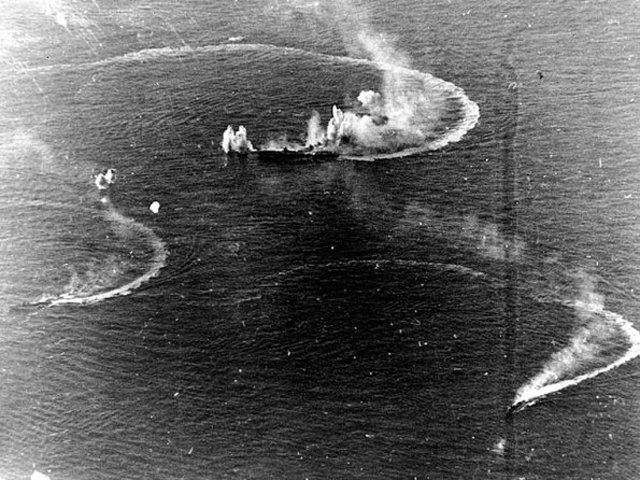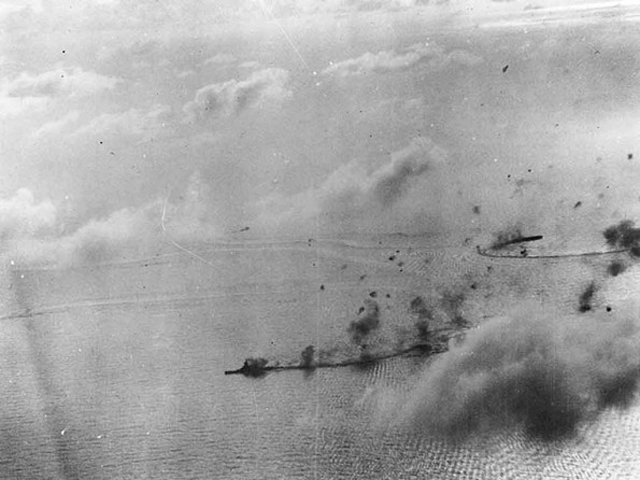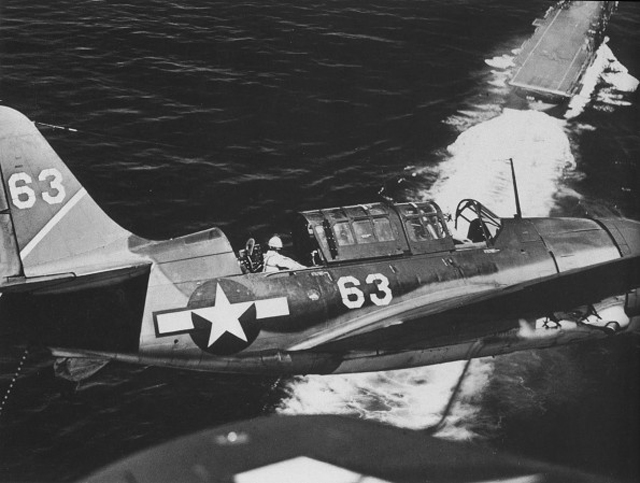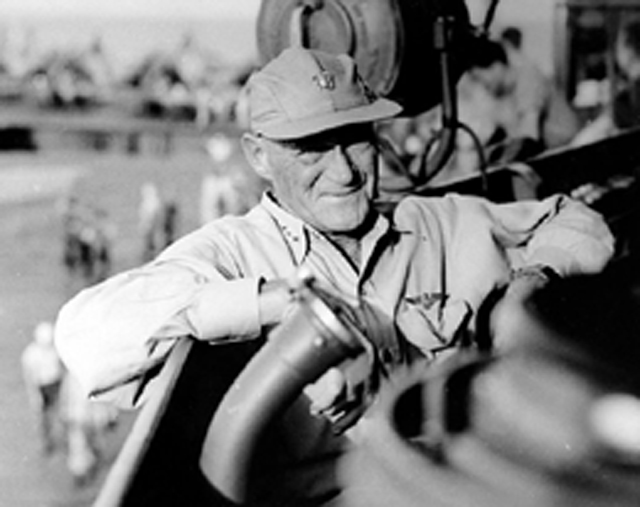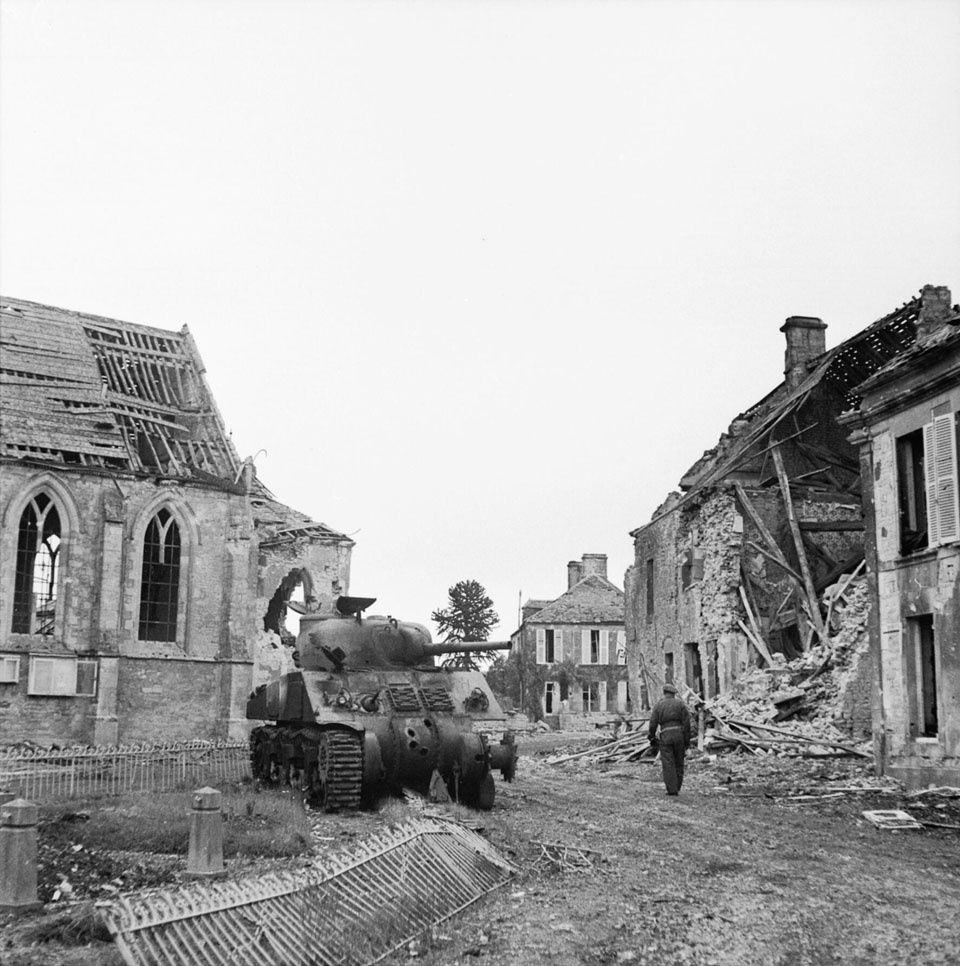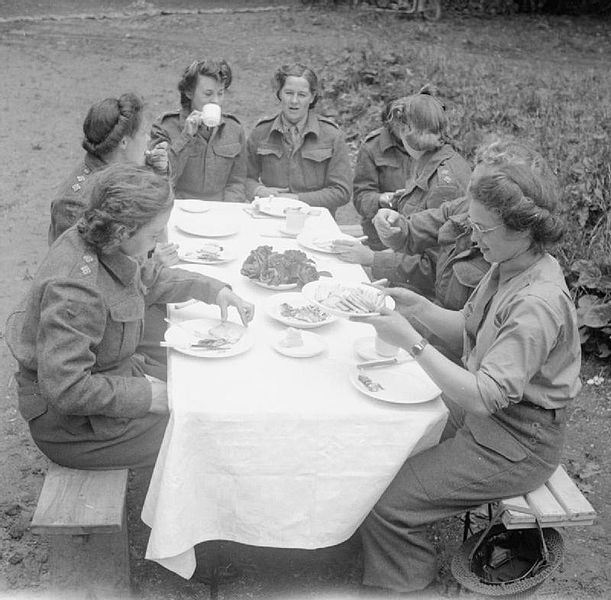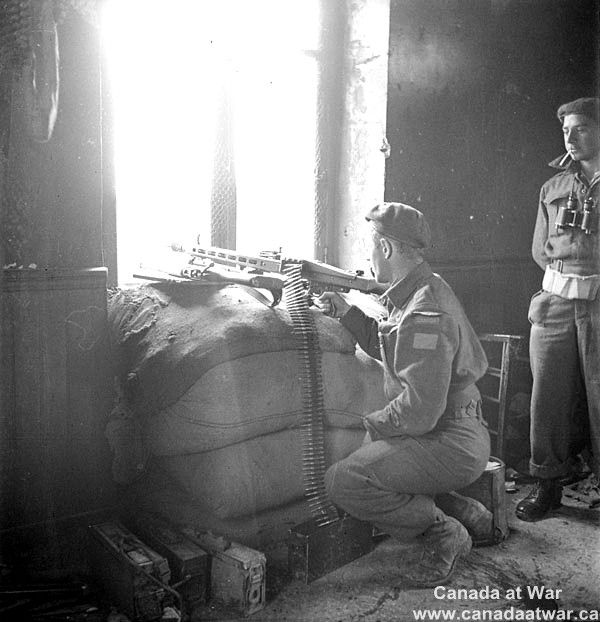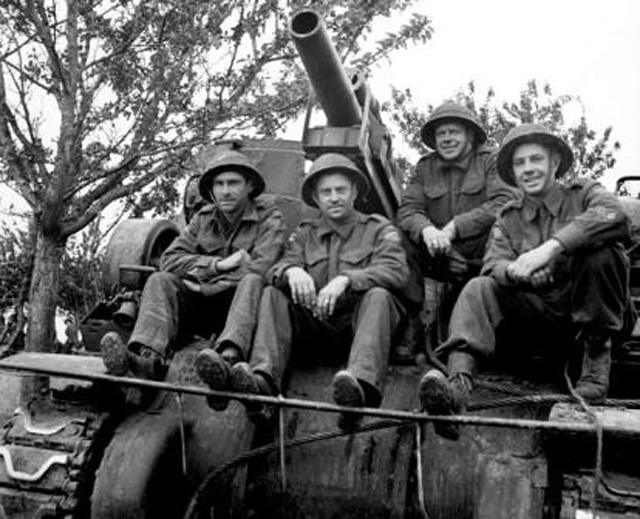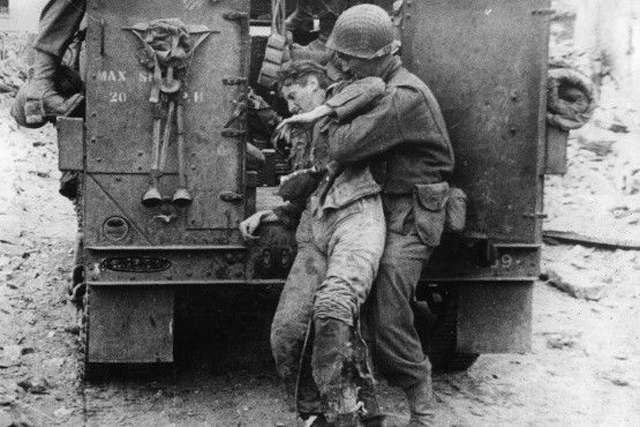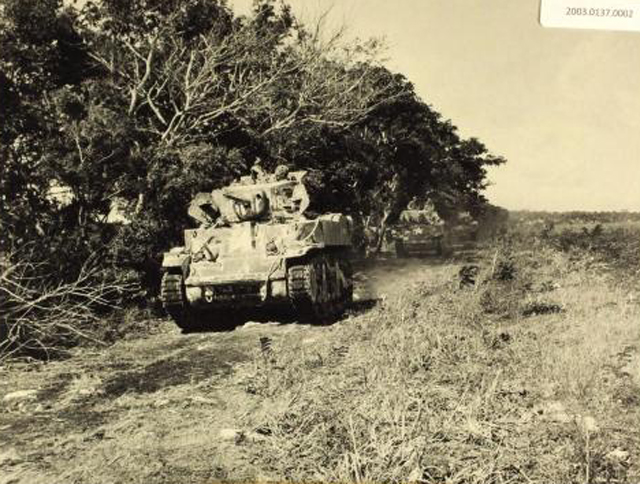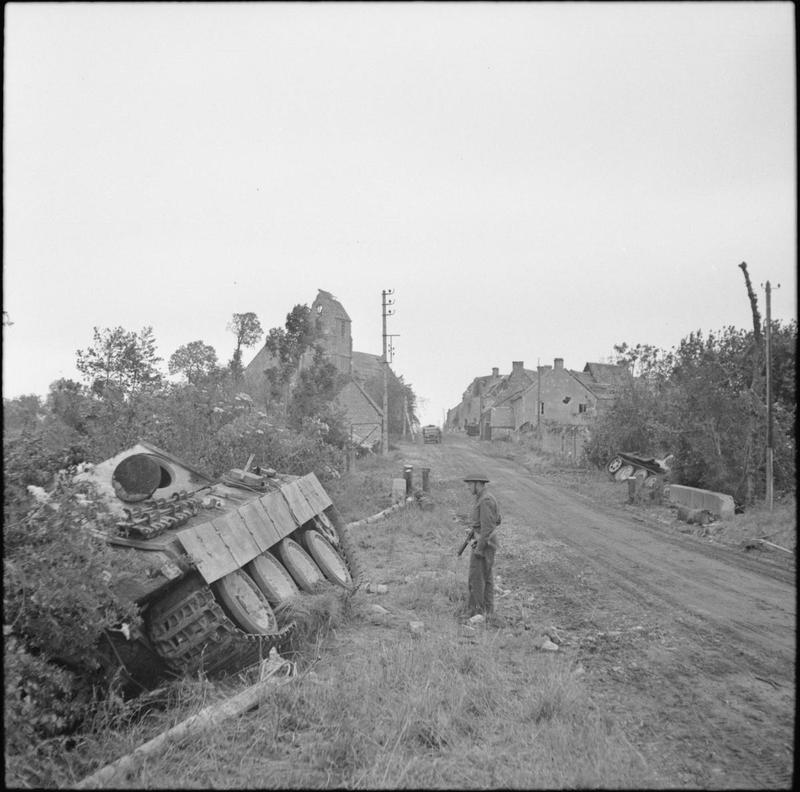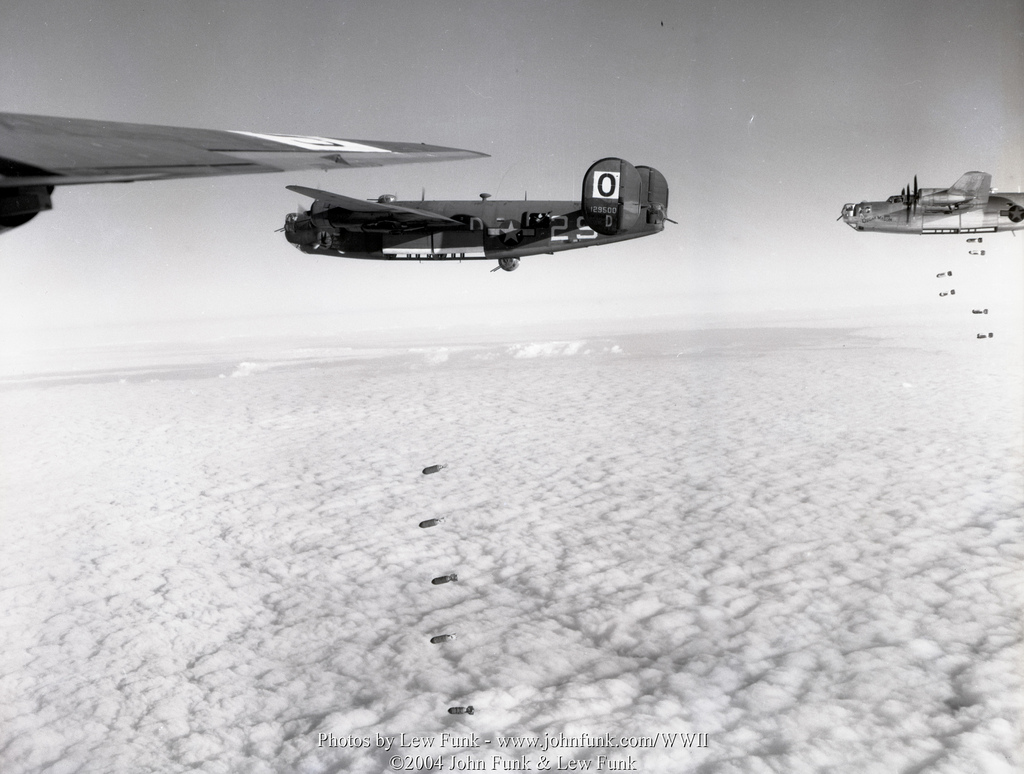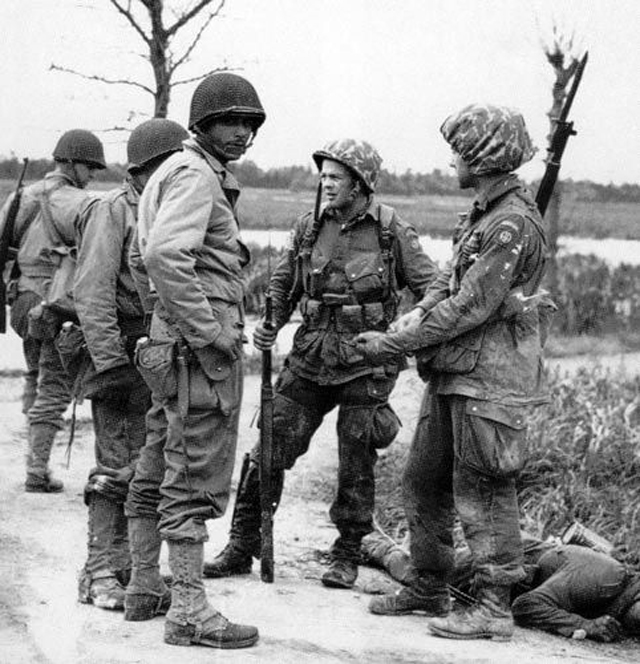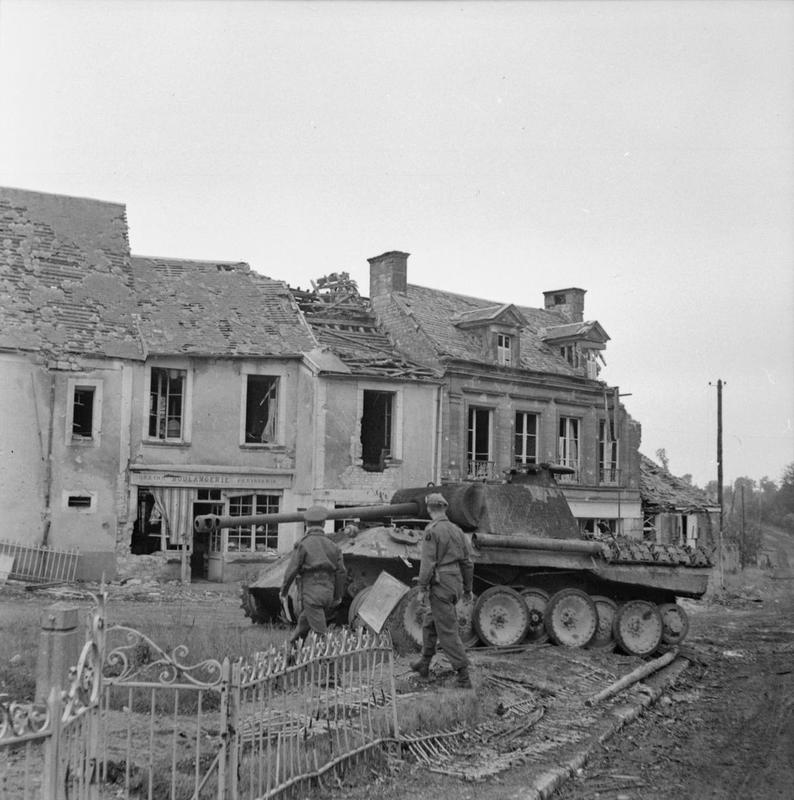Air Operations, Carolines
- VII Bomber Command B-24s attack the Truk Atoll.
- XIII Bomber Command B-24s attack the Truk and Woleai atolls.
Air Operations, CBI
BURMA- 2 490th Medium Bomb Squadron B-25s attack a bridge at Banchaung.
- 11 10th Air Force fighter-bombers attack Myitkyina.
- 5 7th Heavy Bomb Group B-24s airlift fuel to Kamaing.
- 3 308th Heavy Bomb Group B-24s attack shipping in the South China Sea.
- 341st Medium Bomb Group B-25s and 14th Air Force fighter-bombers complete nearly 120 sorties against numerous targets along the Yangtze River and in the Tungting Lake region.
- 24 341st Medium Bomb Group B-25s attack Lungling.
- 16 P-40s attack Chenanso and Tengchung.
- 8 P-40s attack rail facilities and motor vehicles in the Yellow River region.
- 13 10th Air Force B-25s airlift ammunition to Imphal.
Air Operations, Europe
RAF BOMBER COMMANDDaylight Ops:
- 17 Lancasters and 3 Mosquitos of No. 617 Squadron attempt to attack a large, concrete-covered V-weapon site in a quarry at Wizernes, but the target is covered in cloud and no bombs are dropped.
FRANCE:
- During the morning, 126 2nd Bomb Division B-24s, escorted by 44 VIII Fighter Command P-47s, attack V-weapons sites in the Pas-de-Calais area.
- 1 B-24 and 1 P-47 are lost
- During the afternoon, 196 8th Air Force B-17s and 33 B-24s, escorted by 72 VIII Fighter Command P-47s and 40 P-51s, attack V-weapons sites in the Pas-de-Calais area.
- 1 B-24 is lost
- 202 VIII Fighter Command fighers and fighter-bombers bomb and strafe numerous targets across central France, especially in the Paris area.
- 2 P-51s are lost with their pilots
- USAAF fighter pilots down 16 Luftwaffe fighters over France between 0700 and 1944 hours.
- 454 1st Bomb Division B-17s attack oil and industrial targets in Hamburg.
- 316 2nd Bomb Division B-24s attack industrial targets at Politz and Ostermoor.
- 284 3rd Bomb Division B-17s attack industrial targets at Fallersleben, Konigsburg and Magdeburg.
- 139 3rd Bomb Division B-24s attack oil targets at Hannover.
- 26 heavy bombers attack various targets of opportunity.
- 13 B-17s and 35 B-24s are lost, of which 20 2nd Bomd Division B-24s are interned in Sweden
- Escort for the heavy bombers is provided by 637 VIII Fighter Command fighters and 81 IX Fighter Command P-51s. While escorting the various heavy-bomber formations to Germany, USAAF fighter pilots down 34 Luftwaffe fighters, 2 Ju-88s, and 1 Fi-156 between 0905 and 1030 hours.
- 6 fighters and 3 pilots are lost
- 48 VIII Figher Command P-47 fighter-bombers bomb several airdromes.
FRANCE:
- Approximately 370 IX Bomber Command B-26s and A-20s attack nine V-weapons sites and a coastal-defense battery.
- Throughout the day, 9th Air Force fighters and fighter-bombers mount more than 1,000 tactical sorties against targets in the battle area as well as rail lines, bridges, and marshalling yards servicing the battle area.
ITALY:
- Despite bad weather, about 60 12th Air Fokrce medium bombers attack rail targets between Genoa and La Spezia.
- XII TAC fighter-bombers attack rail and road bridges in and near the battle area, and damage an Italian Navy aircraft carrier tied up in Genoa harbor.
Air Operations, Marianas
While patrolling over Guam at 0230 hours, 4 VF(N)-77 (USS Essex) F6F night fighters find that the Tiyand airfield on Guam airstrip is lighted, so they strafe the field until the lights go off. When at 0410 hours, the Tiyan airfield is again lit up, the 4 VF(N)-77 F6Fs shoot down 3 of 4 D3A 'Val' dive bombers that attempt to take off.
At dawn, Task Group 58.4 mounts aggressive fighter sweeps against airfields on Rota and Guam. From all appearances, the airfield on Rota is no longer operational, but opposition is encountered over the Orote airfield on Guam, where 18 Japanese Navy aircraft are shot down and 52 are destroyed on the ground.
Closing out the main portion of the Battle of the Philippine Sea, the 1st Mobile Fleet is able to remain beyond the range of all US aerial searchers—carrier aircraft launched from Task Force 58, PBMs based at Saipan, and PB4Ys based at the Momote airfield on Los Negros. Nevertheless, at 1540 hours, a VT-10 TBM finally spots the main body of the Japanese fleet, which is refueling well to the west of Saipan. An immediate strike is launched—54 TBMs (all but VT-28’s armed with bombs), 51 SB2Cs, 26 SBDs, and 84 F6Fs. At the extremity of their range and with only a half-hour of daylight remaining, the US carrier aircraft commence their attack at 1840 hours. Despite heavy antiaircraft fire and a defense mounted by an estimated 75 A6M Zeros, VT-28 TBMs sink the fleet carrier Hiyo with 1 or 2 torpedoes. The fleet carriers Junyo and Zuikaku, and light carriers Chiyoda and Ryuho are damaged by bombs, as are 3 fleet oilers. 4 TBMs, 10 SB2Cs, and 6 F6Fs are lost in this action, but—far worse—an additional 28 TBMs, 35 SB2Cs, and 17 F6Fs are forced to ditch when they are unable to land aboard friendly carriers after dark. All but 16 pilots and 33 airmen are recovered within 48 hours, but during the night, a VP-16 PBM based at Saipan is shot down by US destroyers while attempting to locate pilots and crewmen of ditched US carrier aircraft. All 11 men aboard the PBM are lost.
Though the balance of the Japanese 1st Mobile Fleet makes good its escape during the night, its surviving carriers have but 35 aircraft remaining aboard.
Throughout the day, US carrier pilots down 42 Japanese aircraft at sea, over the islands, and over the First Mobile Fleet.
[Air Operations, New Guinea
- 4 V Bomber Command B-24 squadrons attack Kamiri airfield on Noemfoor, marking the start of an all-out preinvasion aerial offensive against Noemfoor Island. A-20s, V Fighter Command fighter-bombers, and RAAF aircraft attack the Wewak area.
- US Army ground forces capture the Borokoe and Sorido airfields on Biak, and work resumes extending and strengthening the runway at the Biak's Mokmer airfield.
Battle of the Philippine Sea
The Japanese do not realize the extent of their losses and begin to withdraw temporarily to refuel. They believe that most of their aircraft have landed safely on Guam. Mitscher, of course, pursues and in the late afternoon sends 216 planes, high-level bombers, dive-bombers and torpedo-planes, to attack. They meet only 35 defending fighters and break through to sink the carrier Hiyo and damage 2 others, a battleship and a cruiser. In the action 20 American planes are lost. A further 72 crash in attempting to land back on their carriers in darkness despite the flight decks being bravely lit. A feature of the US operations in this and other engagements is the care taken of the pilots - only 16 flyers and 33 aircrew are not picked up and the story in the rest of the battle is similar. By contrast the Japanese have saved almost none of their pilots and although they still have a significant force of ships they cannot possibly train enough men to fly their aircraft. The pattern of all the previous fleet encounters in the Pacific is thus confirmed.
During the night the Japanese withdraw and are not followed. After this great victory by Spruance and Mitscher the Japanese realize that the outcome of the war is decided.
[CBI
BURMAOn the Salween front, the Chinese 36th Division takes Watien in the Shweli valley.
Gen Stilwell and his NCAC (Northern Area Combat Command) force are transferred from operational control of the 14th Army commander to direct control of the Supreme Allied Commander. The GALAHAD situation is now critical because of battle exhaustion and disease, and it is apparent that Myitkyina cannot be taken quickly. Personnel from the rear area are forced to return to the battle when at all fit for duty.
CHINAVice President Henry Wallace arrives in Chungking, China, as President Roosevelt's personal emissary to assess the situation in China. Gen Stilwell is in Burma and unable to meet with Wallace. Chiang Kai-shek and Gen Chennault, however, are available for meetings and are more than willing to paint the gloomiest possible picture of events. They also press for Stilwell's removal in the interest of preserving Allied unity.
[Diplomatic Relations
The US Vice-President, Henry A. Wallace, arrives in Chungking for discussions with Generalissimo Chiang Kai-shek and Gen Claire Chennault, Chief of the US air forces in China.
[Eastern Front
Viipuri (Vyborg) falls to the Leningrad Front of the Red Army. The Russian 32nd Army attacks the Finns north of Lake Onega. The safety of Leningrad and the opening ot the Gulf of Finland to the Russian fleet are assured. In the central sector the Russians are preparing to launch their great summer offensive.
FINNISH SECTORSoviet forces reach and capture Vipurii, leaving the Finnish South Eastern Army shattered. The scale of the defeat compels the Finns to draw forces away from the Army of Karelia, exactly as anticipated by the Stavka. The next phase in the destruction of the Finnish army is about to begin.
CENTRAL SECTORThere has been more than 10,000 partisan attacks on the railways behind Army Group Center since June 19.
[Italy
Units of the US 5th Army have reached half-way between the Tiber and the Arno. While some units of the French Expeditionary Corps are held up on the Orcia River, a tributary of the Omborne, the 1st Motorized Div is replaced during the night by the 2nd Moroccan Div so that it can take part in Operation ANVIL. Perugia falls to the British 6th Arm Div of the British X Corps.[ITALY]
[Marianas
On Saipan the 4th Marine Division continues its sweep to the north, linking up with the 2nd Division. The enemy has formed a line across the island from Garapan, in the west, to the northwest end of Magicienne Bay in the east. As the 4th Marine Division swings around the 2nd, the 25th Marines encounters and reduces well-organized enemy positions on Hill 500, just west of Tsutsuuran village. The 27th Division begins converging drives on Nafutan from the north and west. The 165th Infantry, reinforced by the 1st Battalion of the 105th, attack to the south toward Nafutan Point at noon after preparatory fire and gains about 1,000 yards. The 3rd Battalion, 105th, continues eastward along the south coast for about 600 yards. It is then only about 100 yards from the 165th Infantry force. The 106th Infantry lands on Saipan and is placed in corps reserve. The 2nd Battalion, 105th Infantry, reverts to the 27th Division.
Aslito airfield is serviceable and can support tactical aircraft to support the marine attack northward.
[New Guinea
On Biak, the 1st Battalion of the 162nd Infantry begins an attack on the West Caves strongpoint but makes little progress. The 163rd Infantry establishes an outpost on Hill 320. The 34th Infantry occupies the Borokoe and Sorido airfields and the village of Sorido against negligible resistance. This unit also establishes blocking positions to prevent the Japanese from reinforcing the main battle area.
On the Aitape front, the Japanese strengthen their positions in the Yakamul area and halt the patrolling in this region by the 128th Infantry.
In the Wakde-Sarmi area, the 6th Division begins a westward attack from the Tirfoam toward Lone Tree Hill. The 20th Infantry drives along the coast to Snaky River without difficulty but is stopped by heavy fire from a defile between Lone Tree Hill and the eastern nose of Mt Saksin.
[Occupied Soviet Union
Partisans in Byelorussa launch a devastating 3-day campaign against the rail communications of the German Army Group Center.
[Pacific
The US submarine Hake (SS-256) attacks a Japanese convoy off the south coast of Mindanao and sinks the army cargo ship Hibi Maru (5874t) in the Saragan Strait.
[Western Front
The American 4th and 79th Divs are only 5 miles from Cherbourg and are becoming embroiled in the outer defenses of the town. While the US VII Corps offensive continues against Cherbourg, units of the 29th Div of the American XIX Corps try in vain to advance in the direction of St Lô.[WF]
[Images from June 20, 1944
|
|
|
|
|
|
|
|
|
|
|
|
|
|
|
|
